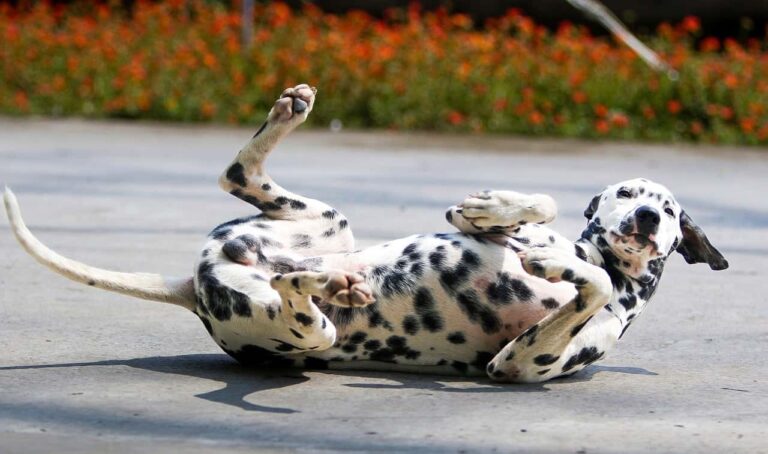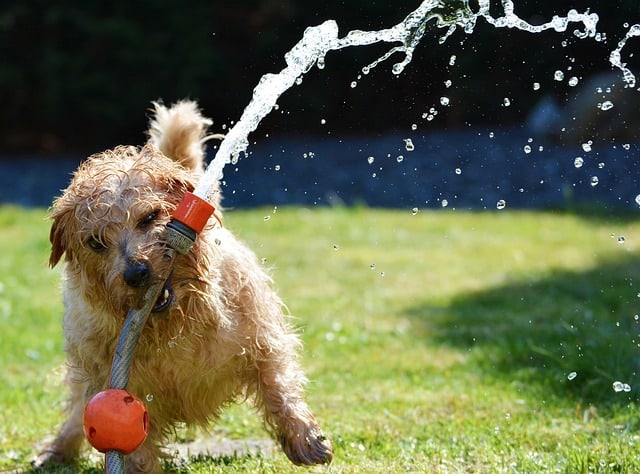Decoding the Difference: Dog Aggression vs Dominance

If you’re a dog owner, you may have heard the terms “aggression” and “dominance” thrown around when understanding your furry friend’s behavior. But what do these terms mean, and how can you tell the difference between aggression and dominance in dogs? In this blog post, we’ll dive into the world of canine behavior to explore the Difference between dog aggression vs dominance.
We’ll explore symptoms, causes, and ways to manage and address these behaviors. This blog will help you understand dog behavior, whether you have an assertive or aggressive dog.
Contents
- Symptoms of Dominance in Dog
- Body Language
- Resource Guarding
- Initiating Play
- Leash pulling
- Inappropriate mounting
- Overprotective of parent
- Demanding play
- Symptoms of Dog Aggression
- Growling, Snapping, or Biting
- Prolonged Staring
- Raised Hackles and Stiff Body Language
- Baring Teeth
- Key Differences: Dog Aggression vs Dominance
- Intent
- Context
- Response to Correction
- Frequency and Severity
- Treatment of Dominant Dog Aggression
- How do you Recover from dominance aggression in dogs?
- Conclusion
Symptoms of Dominance in Dog
Dogs show a few symptoms when they are trying to establish dominance. Understanding these symptoms can help you better communicate with your dog.
Body Language

To recognize dominance in your dog, observe their body language for key symptoms. Signs of dominance can include:
- Direct eye contact
- Standing tall with ears erect
- A stiff, upright tail
Your dog may also attempt to control resources or access to certain areas. When displaying dominant behavior, dogs often exhibit assertive postures, such as:
- Placing their head or paws on other dogs or humans
It’s important to differentiate between normal dog behavior and true dominance. Normal dog behavior may include occasional displays of confidence or assertiveness, while dominance encompasses a consistent pattern of controlling behavior. Decoding these behaviors’ differences can help you understand and address your dog’s actions effectively.
Resource Guarding
Observing your dog’s behavior around valuable resources, such as food, toys, or resting areas, can reveal dominance symptoms, particularly in their attempts to control or protect these items. Signs of dominance include growling, snapping, or aggression when approached while eating, guarding toys possessively, or asserting themselves on furniture or beds.
These behaviors indicate dominance rather than aggression issues and can be addressed through training and behavior modification. To help your dog understand that you are in charge and have the authority to take away valuable resources if necessary, it is crucial to establish yourself as the leader and establish clear boundaries.
Initiating Play

When initiating play with your dog, observe for any signs of dominance, such as pushing toys towards you insistently or nudging you persistently to engage in play, as these behaviors can indicate a desire to control the interaction. Dogs displaying signs of dominance when initiating play may also engage in mounting or humping behavior, attempting to place their head or paws over your shoulders or back and growling or showing teeth when you try to disengage from play.
It’s important to differentiate between playful and dominant behavior when interacting with your dog, as misinterpreting these signs can lead to misunderstandings and potential conflicts. Understanding the nuances of dog behavior during play can help foster a healthy and respectful relationship between you and your furry companion.
Leash pulling
When your dog consistently pulls on the leash during walks, it can be a sign of asserting dominance and trying to control the direction and pace of the walk. This behavior indicates that your dog may exhibit dominance issues and attempt to take charge of the walk.
To address leash pulling and related dominance issues, it’s crucial to focus on dog training and obedience training. Positive reinforcement and consistent training methods can help redirect your dog’s behavior and establish your role as the leader.
You can effectively address dominance and aggression issues by incorporating obedience training into your walks and using techniques to discourage leash pulling.
Understanding and addressing leash pulling as a symptom of dominance is essential for fostering a balanced and harmonious relationship with your dog.
Inappropriate mounting
If your dog frequently engages in inappropriate mounting behavior, it could indicate asserting dominance in their interactions. This behavior is often seen when a dog attempts to mount people, objects, or even other pets in a non-sexual manner.
Here are some signs of dominance that may be observed in your dog’s behavior:
- Posturing: Your dog may display assertive body language, such as standing tall, raising their tail, and holding their head high.
- Resource Guarding: Dogs asserting dominance may guard their toys, food, or other items they consider valuable.
- Ignoring Commands: Dominant dogs may be less responsive to commands or exhibit selective obedience, especially when they need to assert themselves.
Understanding the distinction between dominance and aggression in dogs can help address and modify inappropriate behaviors like mounting.
Overprotective of parent
Exhibiting overprotectiveness toward the parent is a clear symptom of dominance in dogs. When a dog displays overprotective behavior, it may growl, bark, or even snap at anyone who approaches its owner, indicating a sense of ownership and control.
This behavior can be concerning and needs to be addressed to prevent potential aggression towards others.
Below is a table highlighting the distinction between dominance and aggression towards the parent:
| Dominance vs. Aggression towards the Parent | Dominance | Aggression |
|---|---|---|
| Behavior | Hostile and threatening behavior toward the parent | Hostile and threatening behavior towards the parent |
| Intent | Establishing control and authority | Inflicting harm or fear |
| Response to others | Protective and possessive of the parent | Reactivity and hostility towards others |
| Resolution | Training and behavior modification | Professional intervention and training |
Understanding these distinctions can help pet owners recognize and address symptoms of dominance in their dogs.
Demanding play

Is your dog’s demanding play indicative of dominance? Understanding the difference between dominance and aggression is crucial when interpreting your dog’s behavior. Here are three key indicators that can help you distinguish between dominant behavior and aggression in your puppy:
- Body Language: Dominant dogs often display confident body language, such as standing tall with ears erect and tail held high. On the other hand, aggressive behavior may be accompanied by tense body posture, raised hackles, and a hard stare.
- Response to Correction: A dominant dog is more likely to respond to correction with submission, while an aggressive dog may react with increased hostility or defiance.
- Engagement in Play: Dominant dogs may demand play by nudging or pushing, but they typically respond well to redirection. Conversely, aggression towards humans or other animals during play is a concerning sign that goes beyond dominance.
Understanding these distinctions can help you effectively address your dog’s behavior and maintain a healthy relationship.
Symptoms of Dog Aggression
If your dog is displaying aggression, there are certain symptoms you should be aware of. Watch out for:
- Growling, snapping, or biting
- Prolonged staring
- Raised hackles with stiff body language
- Baring teeth
These are all clear signs of aggression in dogs.

Growling, Snapping, or Biting
You should address growling, snapping, or biting as indications of dog aggression. These behaviors aren’t signs of dominance but rather of aggressive behavior. Understanding the difference is crucial for addressing the issue effectively.
Here are three important points to consider:
- Aggressive Behavior: When a dog growls or snaps, it’s displaying aggressive behavior, which can be triggered by fear, pain, or feeling threatened. It’s important to identify the underlying cause to address the behavior effectively.
- Dominant Behavior vs. Aggression: While dominance and aggression are often confused, it’s essential to recognize that growling, snapping, or biting aren’t necessarily signs of dominance but rather aggression.
- Biting: Biting is a serious sign of aggression and should be addressed immediately through professional training and behavior modification to ensure the safety of both the dog and those around them.
Prolonged Staring
A dog’s prolonged staring can be a frequent indicator of potential aggression, signaling a need for careful observation and intervention.
Prolonged staring, as a symptom of dominance, is often misunderstood as a sign of aggression. However, it’s important to differentiate between the two. Dominance is a natural aspect of dog behavior, where they establish a social hierarchy.
Prolonged staring can display dominance, especially towards other dogs or humans. It’s a way for the dog to assert its position within the pack. Understanding this distinction is crucial in addressing the behavior effectively.
Observing the context in which the prolonged staring occurs and seeking professional guidance to differentiate between symptoms of dominance and potential aggression is essential.
Raised Hackles and Stiff Body Language
One common indicator of potential dog aggression is raised hackles and stiff body language, signaling a need for attentive observation and intervention. When you notice your dog exhibiting these signs, it’s essential to understand the underlying reasons and take appropriate action.
Here are some key points to consider:
- Communication: Dogs use body language to communicate and raised hackles and stiff body language can indicate discomfort or a potential threat. Understanding these signs can help you interpret your dog’s emotions and respond accordingly.
- Stress or Fear: Raised hackles and stiff body language can respond to stress or fear, signaling that your dog may feel threatened or anxious in a particular situation.
- Training and Socialization: Proper training and socialization can help reduce the likelihood of your dog displaying aggressive behavior and teach them how to communicate effectively without resorting to aggression.
Baring Teeth
Watch for a dog baring its teeth to indicate potential aggression. When a dog bares its teeth, it’s essential to understand the context and other body language signals.
Baring teeth can be a sign of both dominance and aggression. In terms of dominance, a dog may bear its teeth to assert itself over another dog or a person. It’s their way of saying, ‘I’m in charge here.’
However, showing teeth with aggressive behaviors like growling, stiff posture, or direct eye contact may indicate a more aggressive stance. In this case, the dog is asserting its dominance in a more confrontational and potentially dangerous manner.
Assessing the overall situation and body language to interpret a dog’s behavior accurately is crucial.
Key Differences: Dog Aggression vs Dominance

It’s important to consider the intent behind the behavior, the context in which it occurs, and the dog’s response to correction.
Additionally, the frequency and severity of the behavior can provide valuable insights into whether the dog is displaying dominance or aggression.
Understanding these key differences between Dog Aggression vs Dominance can help you address the issue effectively and promote a positive relationship with your dog.
Intent
When observing dog behavior, it’s important to understand the intent behind their actions to distinguish between dominance and aggression. Here are three key differences in intent between dominant and aggressive behavior:
- Control: Dominant behavior is driven by a desire to maintain control and assert authority over resources or other individuals, while aggressive behavior is motivated by fear, anxiety, or the need to defend oneself.
- Communication: Dominant dogs use body language and vocalizations to communicate their status and intentions, whereas aggression is often displayed with intense, threatening body language and direct, purposeful actions.
- Response to Provocation: Dominant behavior is typically exhibited in response to a perceived challenge to their status, while various stimuli may trigger aggression and are often disproportionate to the perceived threat.
Understanding these differences in intent is crucial for interpreting and addressing canine behavior effectively.
Read More:- How to Stop Dog Jealousy Aggression: Tips to Help Your Dog Cope With Aggression
Context
In your interactions with dogs, understanding the context in which dominance and aggression manifest is crucial for effective interpretation and response. Differentiating between dominance and aggression is essential for interpreting dog behavior accurately. Here’s a helpful comparison to guide your understanding:
| Dominance | Aggression |
|---|---|
| Asserting control over resources | Intent to cause harm or frighten |
| Confident body language | Tense body, showing teeth, intense stare |
| Can be situational and temporary | Persistent and unpredictable |
| Responds to appropriate training and management | Requires professional intervention and behavior modification |
Recognizing signs of dominance, such as resource guarding or demanding attention, allows for proactive training and management. Conversely, identifying symptoms of aggression, like growling, snapping, or lunging, necessitates a different approach. Understanding these differences is crucial for fostering a safe and harmonious relationship with your canine companion.
Response to Correction
Understanding how dogs respond to correction is essential for distinguishing between dominance and aggression.
When it comes to response to correction, there are key differences between dominant behavior and aggressive behavior in dogs:
- Dominant Dogs: Dominant dogs are more likely to accept and learn from correction. They may display submissive behavior, such as lowering their head or averting their gaze, in response to correction. This indicates that they recognize the authority of the person correcting them.
- Aggressive Dogs: Conversely, aggressive dogs may react defensively or with further aggression when corrected. They may growl, bare their teeth, or even attempt to bite in response to correction, displaying an unwillingness to submit to authority.
- Overall Behavior Patterns: Observing how your dog responds to corrections over time can provide valuable insights into whether their behavior is rooted in dominance or aggression. Dominant dogs tend to display consistent, non-threatening behavior outside of specific correction instances, while aggressive dogs may consistently exhibit confrontational behavior.
Frequency and Severity
Assessing the frequency and severity of your dog’s behavior is crucial for distinguishing between dominance and aggression.
Dominance is characterized by consistent, non-violent displays of control, such as resource guarding or pushing through doorways first. Symptoms of dominance may include refusal to obey commands, claiming your personal space, or challenging eye contact. To reduce dominance, establish yourself as the leader through obedience training and consistent discipline.
On the other hand, aggression can manifest in various forms, including fear aggression, territorial aggression, or social aggression, and is often exhibited with intense, erratic behavior. Addressing aggression requires professional intervention and behavior modification techniques tailored to the specific type of aggression displayed.
Understanding the frequency and severity of your dog’s behaviors is key in effectively addressing dog dominance vs. aggression.
Read More:- Dog Aggression When Sleeping: Understand Dog Sleep Aggression During Sleep
Treatment of Dominant Dog Aggression
When dealing with dominant dog aggression, you must establish clear boundaries and assert your leadership consistently and confidently. This is crucial for addressing dominance aggression in dogs and correcting their behavior effectively.
Here’s what you can do:
- Obedience Training: Enroll your dominant dog in obedience training classes to reinforce basic commands and improve their responsiveness to your cues.
- Consistent Discipline: Implement consistent and fair discipline to correct undesirable behaviors. Use positive reinforcement for good behavior and firm, assertive correction for aggression.
- Provide Mental Stimulation: Engage your dominant dog in activities that provide mental stimulation, such as interactive toys and puzzle games, to channel their energy and prevent boredom, which can contribute to aggression.
How do you Recover from dominance aggression in dogs?
Addressing dominance aggression in dogs requires consistent training, behavioral modification, and a clear understanding of canine psychology. Recovery from dominance aggression involves creating a structured environment, setting clear rules and boundaries, and providing consistent leadership. It’s important to differentiate between dominance and aggression, as dominance aggression is rooted in a dog’s desire to assert control rather than an intent to harm.
To aid recovery, consider consulting with a professional dog trainer or behaviorist specializing in dominance-related issues. Additionally, implementing positive reinforcement techniques, such as rewarding good behavior and redirecting negative behavior, can be highly effective in reshaping your dog’s mindset.
Consistency and patience are key when addressing dominance aggression, and with the right approach, significant progress can be made in rehabilitating your dog’s behavior.
| Symptoms of Dominance | Recovery Strategies |
|---|---|
| Pushy behavior towards humans | Establish clear rules and boundaries |
| Reactivity towards other dogs | Provide consistent leadership |
| Guarding resources | Consult with a professional trainer |
Read More : Understanding and Addressing Dog Aggression with Toys
Conclusion
Dog owners need to understand the difference between dog aggression vs dominance in dogs. Recognizing the symptoms of each can help in providing the appropriate treatment and training.
While dominance can be managed through proper training and behavior modification, aggression may require professional help. By addressing these issues early on and working with a professional, dog owners can help their pets lead happy and balanced lives.
Source:- https://southbury-ct.org/filestorage/20556/20567/20569/21571/Dominant_Dog.pdf






